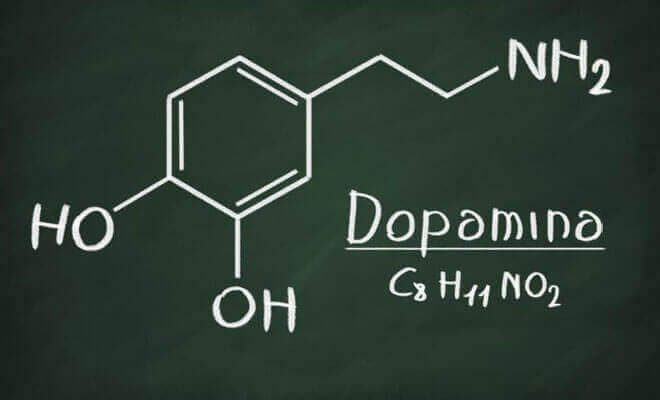Dopamine is one of the most well-known neurotransmitters in our nervous system, known as the pleasure neurotransmitter. Its main function is to activate the reward circuits of the brain, but it also performs other lesser known functions. Dopamine works both by activating and inhibiting brain activity depending on where it is released.
First, we must know that neurotransmitters are biomolecules that are released into the synapse of neurons with the mission of transmitting or altering the transmission of information; In the case of dopamine, dopaminergic neurons are responsible for the release and production of this neurotransmitter.
- Dopamine is synthesized by the amino acid tyrosine and accumulates in synaptic vesicles in the axonal endings of dopaminergic neurons.
- These neurons are mainly found in a part of our brain called black substance and from there they spread along different paths.
- Each with a different then we will show you what these routes are and their functions.
Here we have neurons that are projected through different areas of the limbic system, such as the accumbens nucleus, the limbic system is primarily responsible for the emotional processes of our brain, here dopamine plays an important role in various emotional behaviors.
One of these functions is the administration of the brain’s reward system, when we perform actions that our body considers beneficial, dopamine is released in this way, creating a subjective sense of pleasure that leads us to repeat such behaviors, these behaviors range from those that are biologically programmed, such as quenching hunger or thirst, for those who are exclusively social and scholarly.
The addictions caused by drugs are due to the fact that they stimulate the reward circuit in a very intense way, which makes our brain value the use of these substances as something beneficial for us, which leads us to repeat such behavior.
These are the pathways that are projected to the prefrontal cortex of our brain, this region takes care of the execution skills, that is, those related to planning and decision making, dopamine works in this region generating alternatives, choosing the most suitable and moving towards that.
A dopamine deficiency in this region (as in the case of schizophrenia) causes a lower cognitive response, the individual stops reacting to external stimuli and seems not interested in anything, other changes in this pathway are related to other disorders such as ADHD or depression.
The axons of these dopaminergic neurons are projected into the central gray nuclei of our brain, this pathway is part of the extrapyramidal nervous system, which is responsible for controlling the motor movements of our body.
Dopamine deficiency here produces movement disorders typical of Parkinson’s disease, characterized by stiffness, tremors or slow movement. And dopaminergic hyperactivity in this region causes hyperkinetic disorders, such as tics, for example.
This pathway, instead of being born in the black substance like the others, ranges from neurons from the hypothalamus to the anterior pituitary gland, and is responsible for regulating the release of a known hormone, prolactin, responsible for milk production after delivery.
Usually, this pathway is active and dopamine is responsible for inhibiting prolactin; however, in postpartum the activity of these neurons decreases, triggering a significant release of prolactin, allowing breastfeeding to develop. The mechanism can cause galactorrhea (breast secretion), amenorrhea (absence of menstruation) and sexual dysfunction.
It is a pathway that inerts the thalamus into primates and originates in different parts of the brain. Its role still raises important questions, but recent studies indicate the possibility of being linked to sleep regulation factors and mechanisms for maintaining arousal. evidence of the consequences of possible dopamine deficiencies in this region.
Although this neurotransmitter is famous for participating in the sensation of pleasure and reward, it performs many other functions. Thus, it participates in the regulation of motor aspects and even in the production of milk during lactation.
Knowing the complexity of our neurotransmitters helps us better understand the functioning of our brain, an essential knowledge during the development of treatments or drugs that can help control the possible laggards of these substances in different areas of our nervous system.

